The Employee Experience and Customer Experience Connection
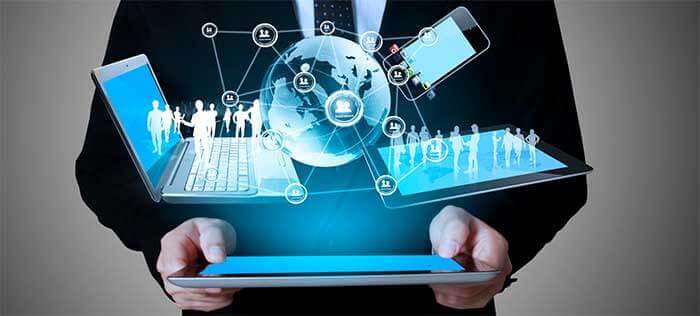 Most organizations have treated employee experience separate from customer experience, but they’re more connected than you think. Let’s start with the definitions.
Most organizations have treated employee experience separate from customer experience, but they’re more connected than you think. Let’s start with the definitions.
Employee experience encompasses all of a worker’s perceptions throughout their journey as part of their organization. It includes everything from their recruitment as a job candidate to initial onboarding, to career development, learning, mentorship, and career advancement. It extends to when they leave their organization. Three factors affect employee experience: culture, physical work location, and technology. The rise of remote work and the influence of Generation Z in the workplace has increased the effect of technology as a driver of employee experience. HR and IT jointly own responsibility for employee experience.
Similarly, customer experience summarizes a customer’s feelings resulting from interactions with a brand’s products and services throughout the buyer’s journey and across the multiple channels throughout which customers interact. Omni-channel strategies require a unified approach to measuring and analyzing customer experience across social, web, mobile, contact center, and in-person interactions. Like employee experience, technology plays a key role in customer experience. Because of that, customer experience is often owned by a combination of marketing, line of business and IT.
Employee experience and customer experience are connected in an omni-channel world
Intuitively, we understand the tight connection between employee experience and customer experience. We experience this all the time through our direct interactions with customer-facing employees in retail, insurance, healthcare, or even government. Retailers like Nordstrom, L.L. Bean, or Zappos have earned strong reputations for empowering their employees to go out of their way to deliver excellent customer service. And their brands are deeply associated with it. In fact, despite its acquisition by Amazon, Zappos maintains its own brand to preserve the equity it has built up over the years.
Technology plays a key role in connecting employee experience and customer experience
A closer look at the three levels of these interactions reveals the role that technology plays.
- User journeys: The paths that customer-facing employees take throughout their day to serve customers, or the paths that a customer takes in navigating a company’s website, interacting with a chatbot, or browsing a store. These journeys intersect in an omni-channel world. When a customer is unable to complete their journey on the website on their own, they reach out to an employee in a contact center to help them do so.
- Business processes: The individual steps that make up the journey, such as “look up account” or “check inventory” or “add to cart.” Individual steps in the business processes may be shared by both customers and employees, depending on who is taking the action.
- Business applications: The applications used by employees executing the business processes while serving customers, or the applications used directly by customers themselves. In many cases, the applications used on the website are the same as the applications used by employees in the contact center or the retail store or branch office.
In an omni-channel world, the journeys, business processes and applications intersect. Business applications can be the same, used by customers via the website or on-line portal, or by the employees serving them.
Happy employees mean happy customers
We understand the linkage between employee experience and customer experience, but what does the data say? Harvard Business Review published an analysis done by Glassdoor researchers who quantified the relationship between employee satisfaction and customer satisfaction. To do so, they associated Glassdoor employee reviews of hundreds of large U.S. companies with ratings from the American Customer Satisfaction Index (ACSI). ASCI records the opinions of 300,000 U.S. customers on products and services.
They found a direct statistical link between employee satisfaction and customer satisfaction. A one-star improvement in a Glassdoor score correlates to a 1.3-point (out of 100) improvement in customer satisfaction. This effect was more than twice as large in industries like retail, tourism, restaurants, health care, and financial services where there is close interaction between employees and customers. Of course, correlation does not mean causality.
The causal link between employee experience and customer experience
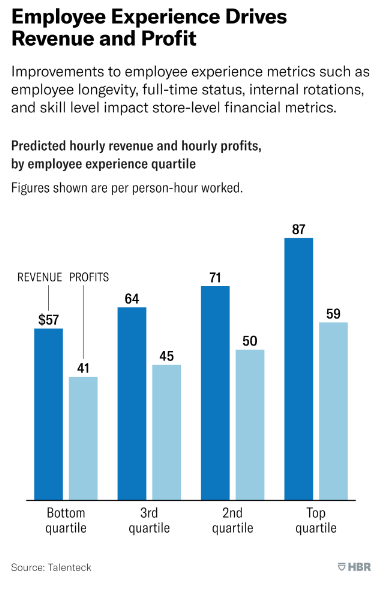
Employee experience significantly drives revenue and profit. (Source: Research: How Employee Experience Impacts Your Bottom Line, HBR, March 22, 2022)
Business leaders tend to underestimate the role that employees play in customer experience because it has been hard to quantify. A more recent study published in Harvard Business Review took the research to the next level by proving causality.
Rather than the broad analysis of hundreds of companies done by Glassdoor, these researchers looked at a single, large retailer with more than one thousand stores. Looking at just one company enabled the researchers to isolate important factors on customer experience.
The effects of company brand, quality of products and website effectiveness were constant across all the company’s stores. The researchers correlated HR metrics like job tenure, cross-training, and skill level with the normalized revenue and profit of each store. They controlled for factors like seasonality and the income levels of surrounding populations.
They found that measures of employee experience were significant drivers of revenue and profit. The data showed a potential 50% increase in revenue and 45% increase in profit per employee-hour by improving their HR metrics from the bottom quartile to the top.
So, investment in employee experience clearly pays off.
Forbes article references Forrester Consulting study commissioned by Kyndryl
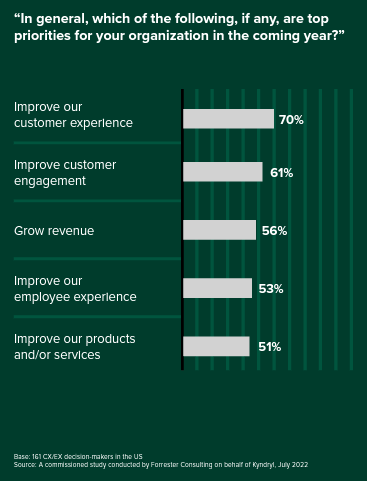
Improving employee experience and customer experience are top priorities for over half of surveyed executives. (Source: “New Insights Into Employee And Customer Experiences,” Forrester Research, Inc., October, 2022)
Research is one thing. Market recognition is another. And the market does recognize this connection.
A recent Forbes article, Three Ways to Improve Employee Experience for Better Business Outcomes, discussed the key role that employees play in delivering excellent customer experience and how more business executives are recognizing the need to invest in employee experience as a result.
The article features Dennis Perpetua, CTO of Digital Workplace Services at Kyndryl, a 2021 spin-off of IBM and the world’s largest provider of IT infrastructure services. Kyndryl, a strategic technology partner of Riverbed, relies on Alluvio Aternity as part of its digital workplace service for global customers like Dow.
The Forbes article refers to research conducted by Forrester Consulting, part of research and advisory firm Forrester Research, on behalf of Kyndryl. As shown in the graph, improving customer experience remains the top priority of business executives. But they also recognize the importance of improving employee experience as a means to that end.
The Forrester study shows a tight connection between employee experience and customer experience exists even below the executive level. It dives into the view of employees who are directly involved in employee experience at their organizations. 45% of these respondents stated that improving customer experience is one of the most important benefits of improving employee experience.
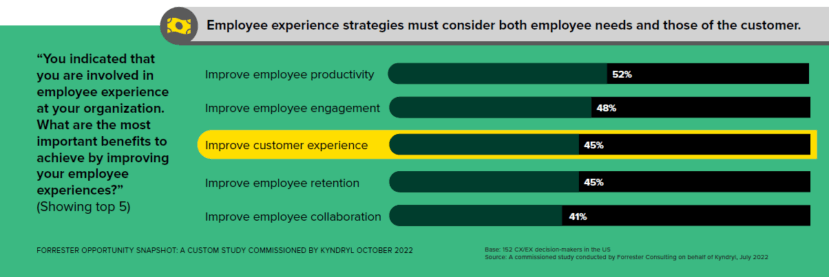
Improving customer experience is one of the top benefits of improving employee experience. (Source: “New Insights Into Employee And Customer Experiences,” Forrester Research, Inc., October, 2022)
Recognition in the market: 451 Research
Riverbed recently conducted a webinar with 451 Research on the connection between employee experience and customer experience in an omni-channel world. I was joined in this webinar by Sheryl Kingstone who leads 451 Research’s coverage for Customer Experience & Commerce. Sheryl shared some compelling data on how customer experience is a catalyst for digital transformation. The chart below shows the main drivers of digital transformation according to 451’s Voice of the Enterprise: Customer Experience & Commerce, Digital Maturity 2021. The areas of biggest difference between “digitally driven” organizations and “digitally delayed” organizations all relate to top line business drivers—customer experience, competitive differentiation, new business models. Improving customer experience tops the list.
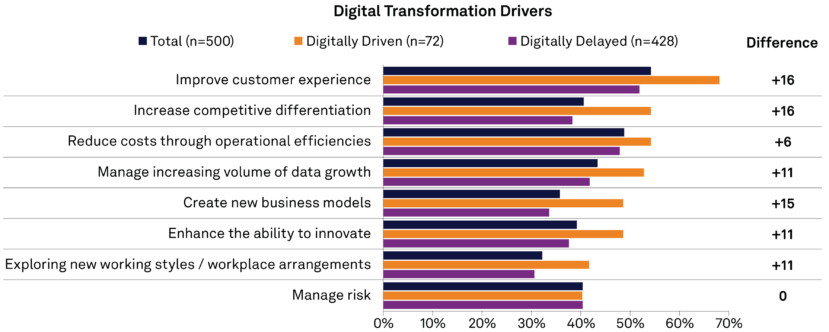
The areas of biggest difference between “digitally driven” organizations and “digitally delayed” organizations all relate to top line business drivers. Q. In your opinion, what are the main drivers for digital transformation? Select all that apply. Base: All respondents (n=500). (Source: 451 Research’s Voice of the Enterprise: Customer Experience & Commerce, Digital Maturity 2021)
The next set of data really shows the connection between employee experience and customer experience. Employee satisfaction is the top metric tracked by organizations focused on improving customer experience. In other words, top organizations understand the tight connection between employee experience and customer experience shown in the HBR research. Metrics like average handle time and average time to respond to a customer inquiry/resolution both relate to the performance of technology used by employees to serve customers.

Employee satisfaction is the top metric used to measure the effectiveness of customer experience initiatives.
Q. Is your organization tracking any of the following metrics to measure the effectiveness of its customer experience initiatives? Select all that apply. (n=351) Q. Which metric has shown the most improvement since your organization began tracking it? (n=334). Base: All respondents. (Source: 451 Research’s Voice of the Enterprise: Customer Experience & Commerce, Digital Maturity 2021)
Don’t separate employee experience and customer experience monitoring
Despite all the data connecting employee and customer experience, and the role that technology plays in both, the market considers monitoring separate categories. As discussed in my Digital Experience Alphabet Soup blog, analyst firms consider employee experience monitoring separate from customer experience monitoring.
But the data points to the need for a comprehensive approach to digital experience management. If employee experience and customer experience are so tightly connected, then the monitoring technologies used to ensure a quality experience should be too.
 This is where Riverbed’s Alluvio Aternity Digital Experience Management plays a role. Aternity is the only DEM solution in the market to provide full spectrum Digital Experience Management. With insights into the digital experience of both customers AND employees, Aternity arms IT with the ability to ensure a positive experience for both. To see how Aternity can help you on your journey to improve the digital experience for ALL your users, register to begin a free trial today.
This is where Riverbed’s Alluvio Aternity Digital Experience Management plays a role. Aternity is the only DEM solution in the market to provide full spectrum Digital Experience Management. With insights into the digital experience of both customers AND employees, Aternity arms IT with the ability to ensure a positive experience for both. To see how Aternity can help you on your journey to improve the digital experience for ALL your users, register to begin a free trial today.

Leave a Reply